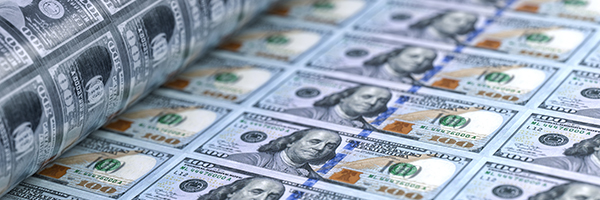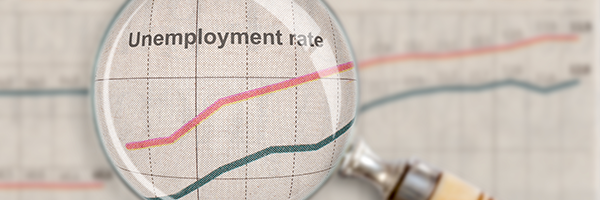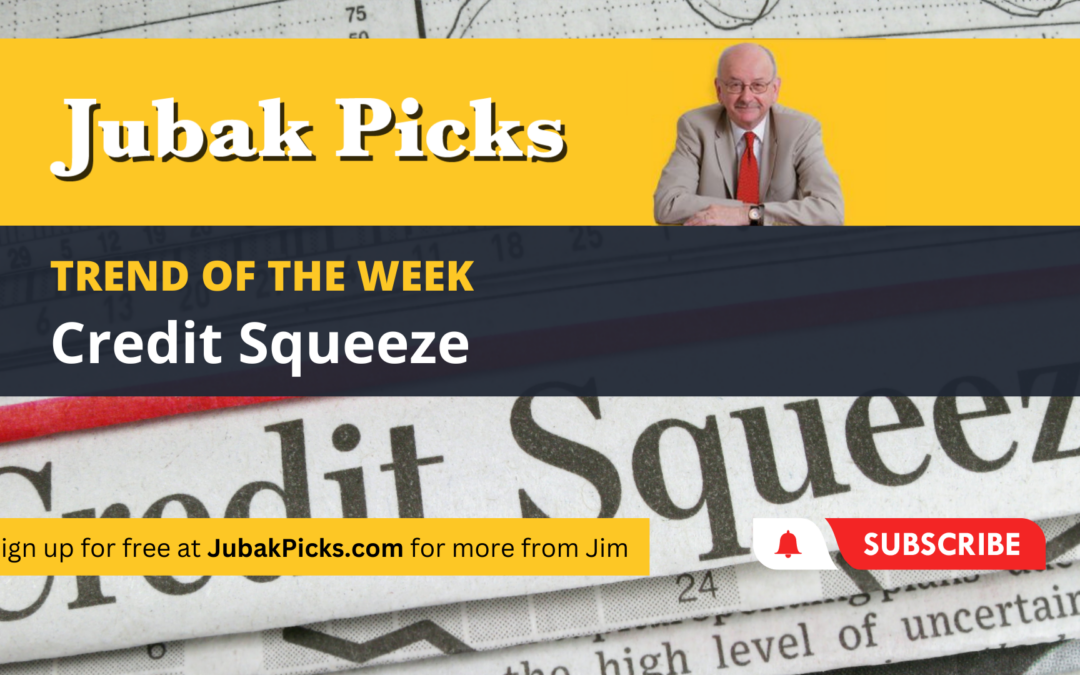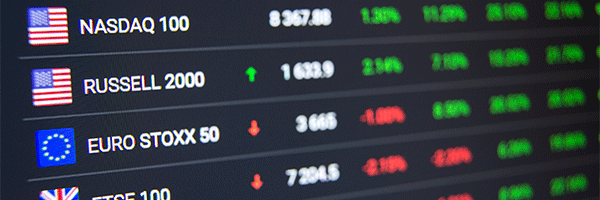
June 10, 2023 | Daily JAM |
This week brings potentially market-moving doses of news on inflation and interest rates. First up, inflation. On Tuesday, June 13, the market will get the report on CPI (Consumer Price Index) inflation for May. Economists project that, because of falling gasoline prices in the month, all-items headline CPI will show just a 0.2% increase in month-to-month inflation in May and just a 4.1% year-over-year inflation rate. That would be the lowest annual inflation rate since March 2021. The core rate, however, is expected to climb at an annual 5.3%. And then on Wednesday, the Fed meets on interest rates.

June 8, 2023 | Daily JAM, Morning Briefing |
A flood of Treasury bill, note, and bond sales will drive yields over the next few months as the U.S. Treasury rebuilds a cash account drawn down to the splinters at the bottom of the barrel during the debt ceiling crisis. On Tuesday, the U.S. Treasury clarified the schedule for auctions designed to refill those coffers. The timing, in my opinion, points to a July peak in Treasury yields. (And don’t forget that the Federal Reserve meets on July 26. Today, June 8, the financial markets are saying that there’s a 75.8% chance of either 25 or 50 basis points of interest rate increases at the conclusion of that meeting (some combination of rate increases at the June 14 and July 26 meetings) with odds at 49.9% of just 25 basis points of increased to the Fed’s benchmark rate, now at 5.00% to 5.25%, as a result of the two meetings. I’ve suggested buying the 2-year Treasury on that July peak.

June 5, 2023 | Daily JAM, Videos |
Today’s Quick Pick is 2 Year Treasuries. Ten-year Treasuries with a 5% yield may still be a long way out, but Two-year Treasuries now have a yield of 4.5%. Rates may continue to go up in the short-term and the Fed is likely going to raise interest rates again in June or July, but this is a good place to start a position in these Treasuries. You can, of course, get a CD with a 5% yield, but the CD won’t earn you capital appreciation. If rates go down when the Fed stops raising rates, treasury yields may go down, but the bond may go up. We’ll likely see a peak in rates in the third quarter, so at the moment, I think Two-year Treasuries are a good buy.

June 1, 2023 | Daily JAM, Morning Briefing |
What’s the difference between a “skip” and a “pause.”
That’s the question the Federal Reserve has posed to the financial markets today. Fed Governor and Vice-chair nominee Philip Jefferson said today that any decision to hold rates steady should not be viewed as the end of the tightening cycle. Coming just two days before the beginning of the Fed’s pre-meeting quiet period, Jefferson’s comments are being seen by the market as a preview of the Fed’s action at its June 14 meeting.

May 27, 2023 | Daily JAM |
You’re entitled to feel a bit (or more) of debt ceiling fatigue. For a change of pace, look to Friday, June 2, when the Bureau of Labor Statistics releases its jobs report for May. Economists project that the U.S. economy added fewer than 200,000 jobs in May. That would be a big dip from the average monthly gain of about 370,000 over the last year. Average hourly earnings are forecast to have increased by 0.3% in May from April.

May 22, 2023 | Daily JAM, Morning Briefing, Short Term |
Last week Federal Reserve chair Jerome Powell said that the Fed could hold off on another interest rate increase at its June 14 meeting. That comment wz one reason that the CME FedWath tool showed the odds of no increase at the meeting jumping to 82.6% on Friday, May 19. But today, Federal Reserve Bank of St. Louis President James Bullard and Neel Kashkari, head of the Minneapolis Fed said, essentially, that “could” doesn’t mean will. Bullard backed two more 2023 interest-rate increases and Kashkari said if the central bank pauses next month it should signal tightening isn’t over.

May 15, 2023 | Daily JAM, Mid Term, Videos |
This week’s Trend of the Week is Credit Squeeze. SLOOS (Senior Loan Officer Opinion Survey), a Fed survey, asks bank lending officers what they’re seeing in the credit market for commercial industrial loans. In the most recent survey, 46% of these officers report that their banks are making it harder to get loans. This is a textbook example of Hyman Minsky’s credit cycle. After a period of booming lending, the credit cycle returns to a period of tightening credit, often coinciding with eye-opening events like the Silicon Valley Bank failure, and a slowing down of the economy overall. The SLOOS report also showed a 56% drop in demand for commercial loans in the first quarter–an indicator that companies are aware that loans are harder to come by. Companies are having real trouble raising capital which is resulting in merger and/or acquisition deals for early-stage companies and employee layoffs as CEOs and CFOs attempt to hoard cash. The signs are that the Fed is taking notice of this contraction in the credit market and is starting to factor it into rate hike decisions. The Fed may decide it doesn’t need as many interest rate increases as it originally thought if the supply of credit is shrinking quiickly.

May 12, 2023 | Daily JAM, Mid Term, Morning Briefing |
It’s only a survey of consumer sentiment so it’s not very important to the financial markets, right? Wrong. The University of Michigan survey of consumer sentiment for May illustrates perfectly the trap that the Federal Reserve is caught in right now.

May 5, 2023 | Daily JAM, Morning Briefing |
The U.S. economy added 253,000 jobs in April, the Bureau of Labor Statistics announced today, Friday, May 5. The official unemployment rate dipped by 10 basis points to 3.4%. (The U-6 unemployment rate, which includes discouraged workers who have stopped looking for a job and workers with part-time jobs who would like full-time work, fell to 6.1% in April (before seasonal adjustments) from 6.8% in March.) Economists were looking for the economy to add just 180,000 jobs in the month. The number is a huge surge after a drop from 472,000 jobs added in January to a revised 165,000 in March.

May 4, 2023 | Daily JAM, Morning Briefing, Short Term |
Initial claims for unemployment rose by the most in six weeks while continuing claims fell in the week ended April 29, the Labor Department reported this morning. Initial unemployment claims rose by 13,000 to 242,000. Economists surveyed by Bloomberg were looking for 240,000 initial claims. Continuing claims, which include people who have received unemployment benefits for a week or more and are a good indicator of how hard it is for people to find work after losing their jobs, fell by 38,000 to 1.81 million in the week ended April 22. That marked the biggest drop since July. If you think that a rise in unemployment and a weakening of the labor market is a good thing, as the Federal Reserve does, because it sets the stage for a decline in inflation, then today’s data had its negative aspects too. A separate report out today showed U.S. worker productivity declined in the first quarter by more than forecast and labor costs accelerated. That’s a strong argument for higher inflation.

May 3, 2023 | Daily JAM, Short Term |
Immediately after the Federal Reserve’s decision to raise interest rates another 25 basis points today, stocks moved up on a reading of the Fed’s 2 p.m. statement released with the rate news that saw the Fed as saying it would begin to cut interest rates soon. At 2:26 p.m. New York time the Standard & Poor’s 500 was up 0.58%. In Wednesday’s statement, the Fed said, “In determining the extent to which additional policy firming may be appropriate to return inflation to 2% over time, the committee will take into account the cumulative tightening of monetary policy, the lags with which monetary policy affects economic activity and inflation, and economic and financial developments.” In March, the central bank had said it “anticipates that some additional policy firming may be appropriate in order to attain a stance of monetary policy that is sufficiently restrictive to return inflation to 2 percent over time.” But stocks peaked for the day shortly after Fed chair Jerome Powell began his press conference at 2:30 p.m.

May 3, 2023 | Daily JAM, Morning Briefing |
Today, Federal Reserve’s Open Market Committee raised the Fed’s benchmark rate by 25 basis points to a target range of 5%- to 5.25%. The interest rate increase was expected by just about everyone. At 1:50, 10 minutes before the Fed’s announcement, the Fed Funds Futures market had priced in 88.2% odds of a 25 basis point increase. The Fed’s statement omits prior language from the March meeting that said “some additional policy firming” may be warranted. Instead, the Fed said it will take into account various factors “in determining the extent to which additional policy firming may be appropriate.” In other words, rate increases or a pause will depend on the data.











